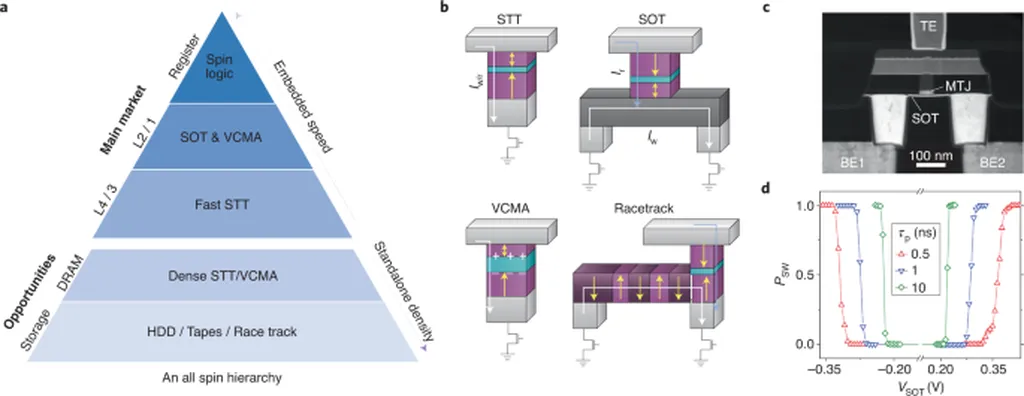In a groundbreaking study published in the Journal of Physics: Materials, researchers have uncovered a novel phenomenon in platinum surfaces that could have significant implications for the energy sector. Led by Dr. Larisa E. Borcan from the National Institute of Materials Physics and the University of Bucharest, the team has detected spin asymmetry in clean Pt(001)–hex surfaces, even in the absence of external magnetization. This discovery opens up new avenues for understanding and manipulating surface magnetism, which could be pivotal for advancements in spintronics and magnetic storage technologies.
The research team employed a suite of sophisticated techniques, including spin-resolved photoelectron spectroscopy, low energy electron diffraction (LEED), scanning tunneling microscopy (STM), and high-resolution core-level x-ray photoelectron spectroscopy (XPS). These methods allowed them to quantify the surface component attributed to the last surface layer, which is enriched in electrons. “The key finding here is that the spin asymmetry is induced by electron accumulation into the last monolayer,” explained Dr. Borcan. “This phenomenon is consistent with the criteria of band ferromagnetism, suggesting a spin-textured state or the presence of a Stoner gap near the Fermi level.”
The orientation of the spin asymmetry in the non-magnetized sample aligns with the direction of the rows of the hex reconstruction, while in the magnetized sample, it aligns with the direction of the external magnetizing field. This dual alignment indicates a strong interplay between the surface structure and the magnetic properties, which could be harnessed for novel applications in magnetic data storage and spin-based electronics.
The commercial impacts of this research are substantial. In the energy sector, the development of more efficient and reliable magnetic storage devices could revolutionize data management and energy storage solutions. Spintronics, which leverages the spin of electrons rather than their charge, promises faster and more energy-efficient devices. Understanding and controlling surface magnetism at the atomic level could lead to breakthroughs in this field, ultimately benefiting industries that rely on large-scale data storage and processing.
Dr. Borcan’s team also observed a strong variation of the spin asymmetry as a function of the binding energy near the Fermi level, which depends on the median emission angle. This finding suggests a complex spin-textured state or the presence of a Stoner gap, adding another layer of intrigue to the study. “The implications of these findings are far-reaching,” said Dr. Borcan. “They not only deepen our understanding of surface magnetism but also pave the way for innovative technologies that could transform the energy and electronics industries.”
As the world continues to seek more efficient and sustainable energy solutions, research like this is crucial. The insights gained from this study could lead to the development of next-generation magnetic materials and devices, ultimately contributing to a more energy-efficient future. The publication of this research in the Journal of Physics: Materials, known in English as JPhys Materials, underscores its significance and potential impact on the scientific community and industry alike.
In summary, Dr. Larisa E. Borcan and her team have made a significant stride in the field of surface magnetism. Their discovery of spin asymmetry in Pt(001)–hex surfaces offers a glimpse into the future of spintronics and magnetic storage technologies, with profound implications for the energy sector. As we continue to explore the intricacies of surface magnetism, the potential for innovation and technological advancement is boundless.

